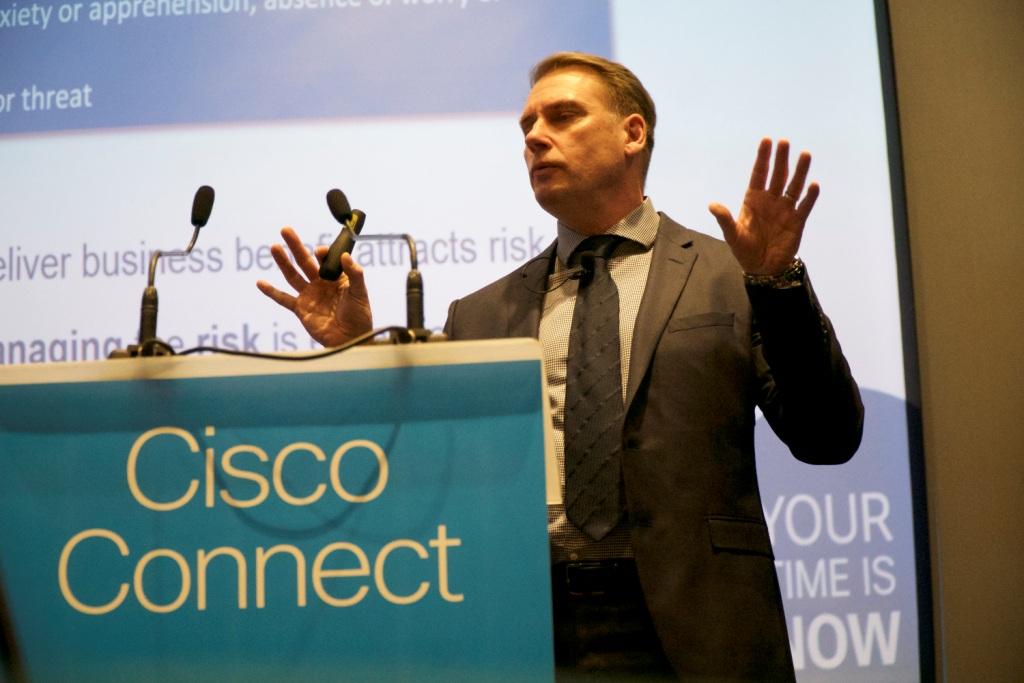
Cisco has released the 2017 Annual Cybersecurity Report (ACR) during the Cisco Connect East Africa 2017. According to the Cisco 2017 ACR, over one-third of organizations that experienced a breach in 2016 reported substantial customer, opportunity and revenue loss of more than 20 percent. 90 percent of these organizations are improving threat defense technologies and processes after attacks by separating IT and security functions (38 percent), increasing security awareness training for employees (38 percent), and implementing risk mitigation techniques (37 percent). The report surveyed nearly 3,000 chief security officers (CSOs) and security operations leaders from 13 countries in the Security Capabilities Benchmark Study, part of the Cisco ACR.
Now in its 10th year, the global report highlights challenges and opportunities for security teams to defend against the relentless evolution of cybercrime and shifting attack modes. CSOs cite budget constraints, poor compatibility of systems, and a lack of trained talent as the biggest barriers to advancing their security postures. Leaders also reveal that their security departments are increasingly complex environments with 65 percent of organizations using from six to more than 50 security products, increasing the potential for security effectiveness gaps.
To exploit these gaps, ACR data shows criminals leading a resurgence of “classic” attack vectors, such as adware and email spam, the latter at levels not seen since 2010. Spam accounts for nearly two-thirds (65 percent) of email with eight to ten percent cited as malicious. Global spam volume is rising, often spread by large and thriving botnets.
Measuring effectiveness of security practices in the face of these attacks is critical. Cisco tracks progress in reducing “time to detection” (TTD), the window of time between a compromise and the detection of a threat. Faster time to detection is critical to constrain attackers’ operational space and minimize damage from intrusions. Cisco has successfully lowered the TTD from a median of 14 hours in early 2016 to as low as six hours in the last half of the year. This figure is based on opt-in telemetry gathered from Cisco security products deployed worldwide.
The Business Cost of Cyber Threats: Lost Customers, Lost Revenue
The 2017 ACR revealed the potential financial impact of attacks on businesses, from enterprises to SMBs. More than 50 percent of organizations faced public scrutiny after a security breach. Operations and finance systems were the most affected, followed by brand reputation and customer retention. For organizations that experienced an attack, the effect was substantial:
- Twenty-two percent of breached organizations lost customers — 40 percent of them lost more than 20 percent of their customer base.
- Twenty-nine percent lost revenue, with 38 percent of that group losing more than 20 percent of revenue.
- Twenty-three percent of breached organizations lost business opportunities, with 42 percent of them losing more than 20 percent.
Hacker Operations and New “Business” Models
In 2016, hacking became more “corporate.” Dynamic changes in the technology landscape, led by digitization, are creating opportunities for cybercriminals. While attackers continue to leverage time-tested techniques, they also employ new approaches that mirror the “middle management” structure of their corporate targets.
- New attack methods model corporate hierarchies: Certain malvertising campaigns employed brokers (or “gates”) that act as middle managers, masking malicious activity. Adversaries can then move with greater speed, maintain their operational space, and evade detection.
- Cloud opportunity and risk: Twenty-seven percent of employee-introduced, third-party cloud applications, intended to open up new business opportunities and increase efficiencies, were categorized as high risk and created significant security concerns.
- Old-fashioned adware ‑ software that downloads advertising without user permission – continued to prove successful, infecting 75 percent of organizations investigated.
- A bright spot emerged with a drop in the use of large exploit kits such as Angler, Nuclear and Neutrino, whose owners were brought down in 2016, but smaller players rushed in to fill the gap.
Secure the Business, Maintain Vigilance
The 2017 ACR reports that just 56 percent of security alerts are investigated and less than half of legitimate alerts remediated. Defenders, while confident in their tools, battle complexity and manpower challenges, leaving gaps of time and space for attackers to utilize to their advantage. Cisco advises these steps to prevent, detect, and mitigate threats and minimize risk:
- Make security a business priority: Executive leadership must own and evangelize security and fund it as a priority.
- Measure operational discipline: Review security practices, patch, and control access points to network systems, applications, functions, and data.
- Test security effectiveness: Establish clear metrics. Use them to validate and improve security practices.
- Adopt an integrated defense approach: Make integration and automation high on the list of assessment criteria to increase visibility, streamline interoperability, and reduce the time to detect and stop attacks. Security teams then can focus on investigating and resolving true threats.

